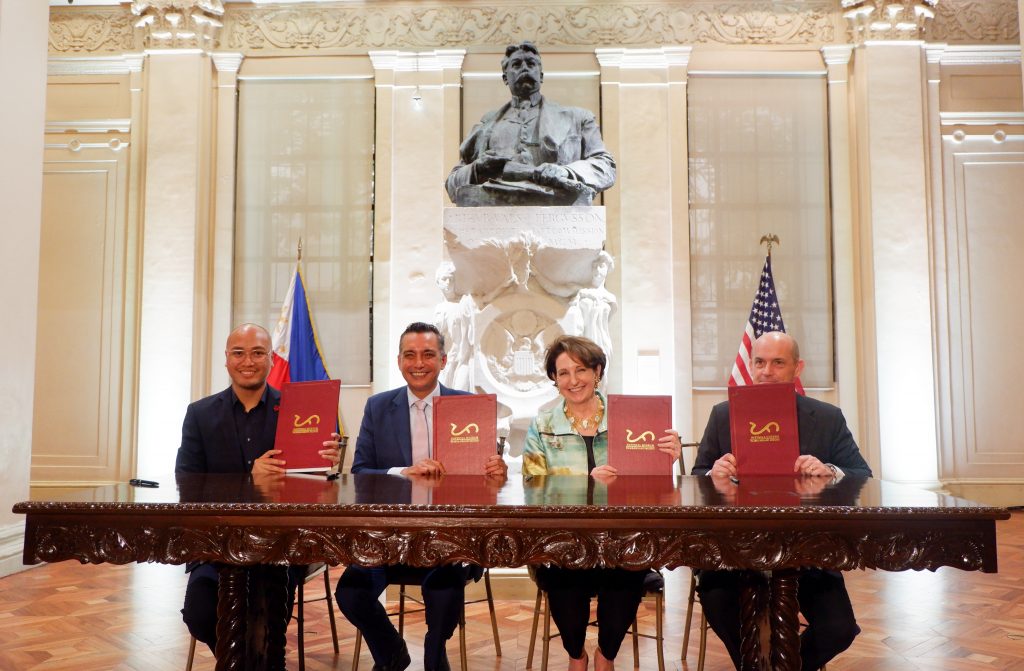NMP, US EMBASSY EXTENDS FERGUSSON MONUMENT LOAN

The National Museum of the Philippines renewed its partnership with the U.S. Embassy in the Philippines by extending the loan agreement of the 𝑴𝒐𝒏𝒖𝒎𝒆𝒏𝒕 𝒕𝒐 𝑨𝒓𝒕𝒉𝒖𝒓 𝑾𝒂𝒍𝒔𝒉 𝑭𝒆𝒓𝒈𝒖𝒔𝒔𝒐𝒏, currently on display at the Spoliarium Hall of the National Museum of Fine Arts, for another three years.
Prior to the signing ceremony held yesterday, the National Museum of the Philippines’ Deputy Director-General for Museums Jorell Legaspi gave a brief overview of the provenance of the monument and its creator. It was followed by a message from the US Ambassador to the Philippines MaryKay Carlson who talked about the monument’s symbolism of the long-standing relationship between the United States and the Philippines.
The loan extension was then signed by NMP Director-General Jeremy Barns, Supervisory General Services Officer of the United States Department of State Daniel McCullough, Mr. Legaspi, and Amb. Carlson. After the signing of the documents, Director-General Barns gave his final remarks, recalling the collaborations between the NMP, the US Embassy, and various American institutions.
Other attendees present in the event included German Ambassador to the Philippines Anke Reiffenstuel, First Secretary of the Spanish Embassy in the Philippines Luis Morales Fernández, Bruneian Ambassador to the Philippines Megawati Dato Paduka Haji Manan, and DOT Undersecretary Atty. Shereen Gail Yu-Pamintuan. Representatives from the National Commission for Culture and the Arts, the National Historical Commission of the Philippines, the National Parks Development Committee, the Intramuros Administration, and the Museum Foundation of the Philippines were also present, among others.

The monument, first loaned to the National Museum of the Philippines in 2017, was created in 1912 by Spanish sculptor Mariano Benlliure y Gil (1862-1947) in honor of Arthur Walsh Fergusson, the first Executive Secretary of the Philippines who held office until his death in 1908. The monument was originally erected and inaugurated in Plaza Fergusson (now the Plaza Nuestra Señora de Guia), adjacent to the US Embassy in Ermita, Manila on November 15, 1913. However, it sustained heavy damage during the Battle of Manila in 1945. Eventually, the City of Manila transferred ownership of the monument to the United States Embassy in the Philippines, who, in turn, later loaned it to the National Museum. The Fergusson Monument is the only monument of its kind to be made for an American in the Philippines and illustrates the shared history of the United States and the Philippines.
The National Museum of the Philippines expresses its deep gratitude to the United States Government for their generous support of the NMP and its mission.
























